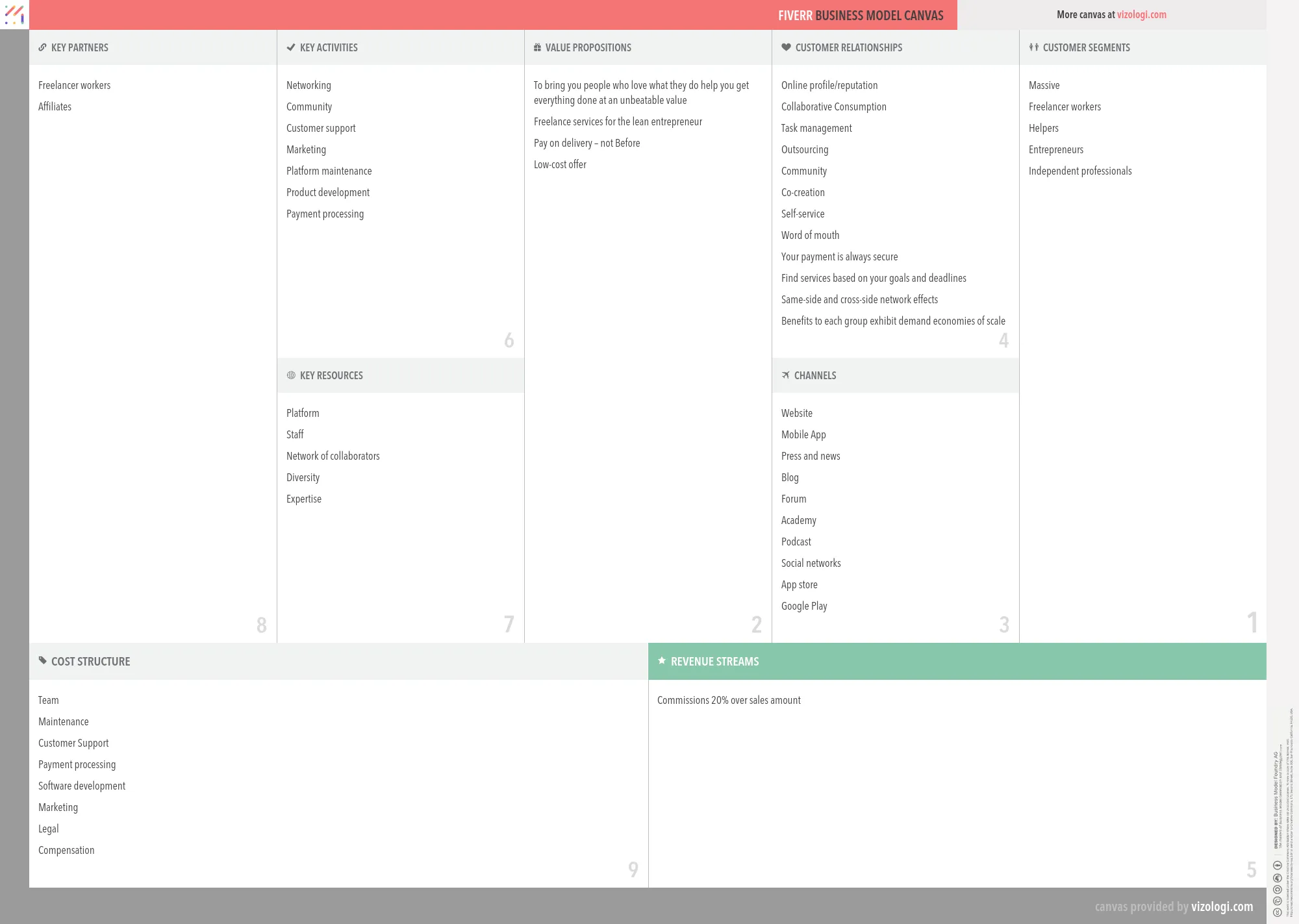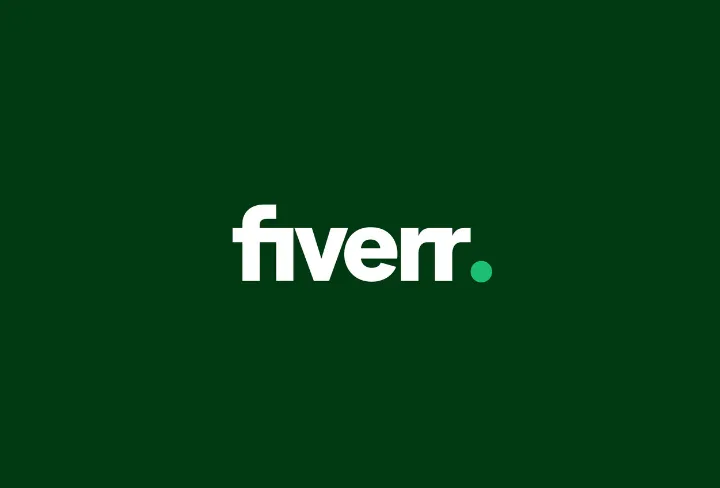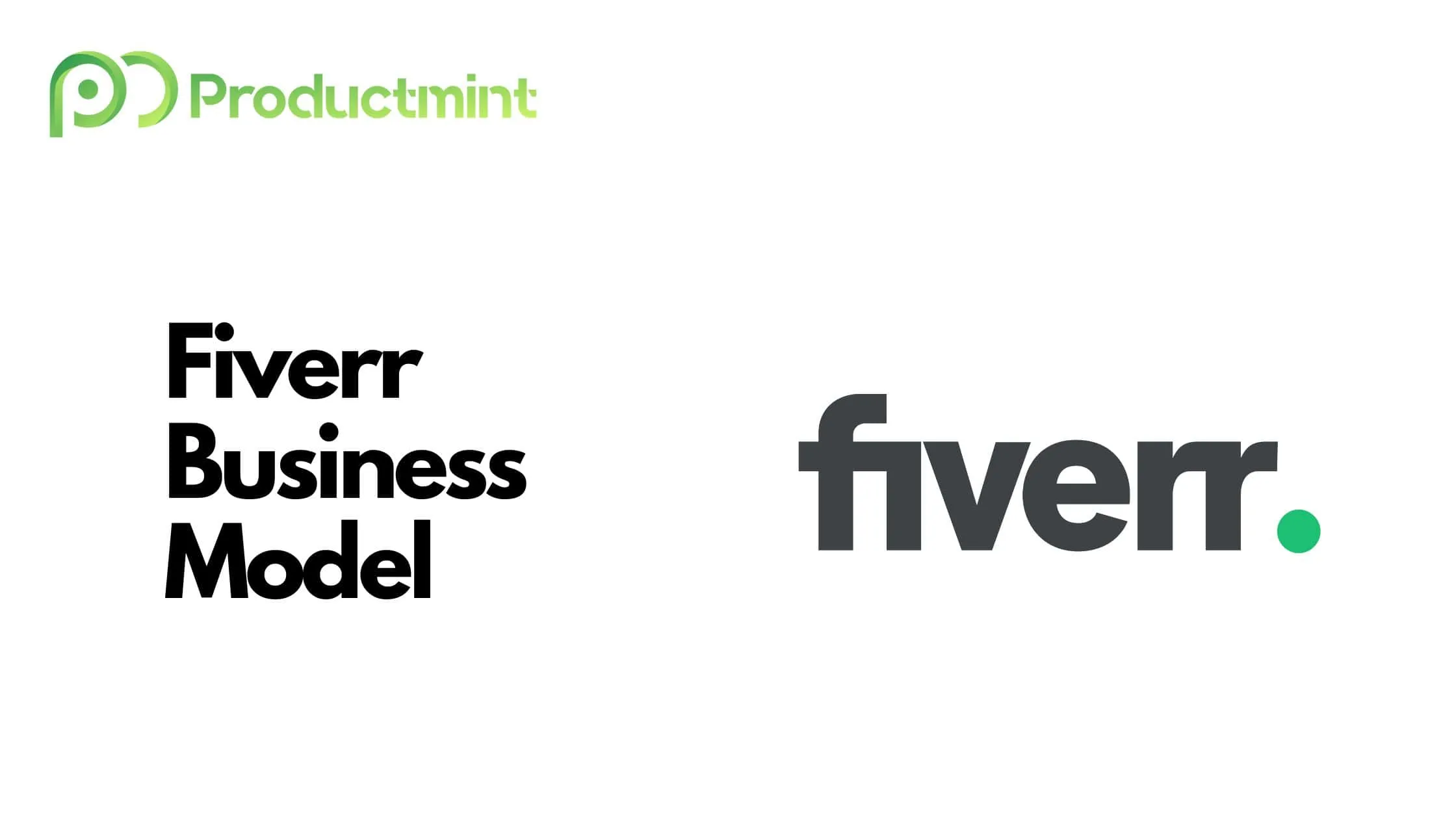Welcome to the fascinating world of Fiverr! If you're looking to explore a vibrant marketplace where creativity and skills come together, you've landed in the right spot. Fiverr is an online platform that connects freelancers offering a variety of services with potential clients in need of those services. Founded in 2010, this innovative platform has revolutionized the way people find and hire talent, all at the click of a button. Whether you're a freelancer looking to showcase your skills or a business in need of expertise, Fiverr offers an array of opportunities suitable for everyone.
Overview of the Fiverr Business Model

The Fiverr business model is quite simple yet incredibly effective. It operates on a marketplace framework where freelancers, referred to as "sellers," can list their services—called "gigs"—and clients, or "buyers," can purchase these services directly. Here’s a breakdown of how it works:
- Service Listings: Sellers create detailed listings for their services, including descriptions, pricing, and delivery timelines.
- Categories and Subcategories: Services are organized into various categories—ranging from graphic design to digital marketing and writing services—making it easy for buyers to find what they need.
- Pricing Structure: Fiverr initially introduced a single price point of $5 for gigs, hence the name. However, sellers can now set tiered pricing based on complexity, offering more value options to buyers.
- Transaction Fees: Fiverr earns revenue by charging a service fee—20% of the total transaction—for every gig purchased. This fee covers the platform's operational costs and allows it to offer additional services.
This model fosters a win-win situation where sellers gain exposure to a global audience while buyers have access to a diverse talent pool. With its user-friendly interface and transparent pricing, Fiverr continues to grow in popularity, redefining the freelance landscape one gig at a time.
Also Read This: Rates for Freelance Social Media Managers
Key Features of Fiverr's Platform

Fiverr has gained immense popularity among freelancers and business owners alike, and it's no surprise why! Its platform is designed with several key features that enhance user experience and promote seamless transactions. Here are some standout features:
- User-Friendly Interface: Navigating Fiverr is a breeze. The clean layout enables users to quickly search for services, making it easy to find the right freelancer for their project.
- Diverse Categories: Whether you need graphic design, writing services, or digital marketing, Fiverr offers a vast array of categories, ensuring there's something for everyone. There are over 300 categories to choose from!
- Customizable Gigs: Freelancers can create “gigs” that outline their services, pricing, and delivery times. This flexibility means that sellers can showcase their unique skills in a way that attracts potential buyers.
- Rating and Review System: Buyers can leave reviews and ratings for freelancers after completing a project. This not only helps others make informed decisions but also encourages service providers to maintain high standards.
- Secure Payment System: Fiverr offers a secure payment gateway, giving users peace of mind knowing that both their money and personal information are protected.
Overall, these features make Fiverr not just a marketplace for hiring freelancers, but a community that fosters trust and transparency between buyers and sellers.
Also Read This: How Long Does It Take for Fiverr to Pay Me?
Revenue Streams for Fiverr

Fiverr has implemented a versatile array of revenue streams that help the company sustain and grow its platform. Let’s delve deeper into the main ways Fiverr generates income:
| Revenue Stream | Description |
|---|---|
| Service Fees: | Fiverr charges a service fee on every transaction made on the platform. Typically, buyers pay a percentage of the gig price, which can range from 5% to 20% depending on the purchase amount. |
| Subscription Plans: | Fiverr has introduced subscription plans like Fiverr Pro, providing businesses with access to higher-quality services and premium freelancers for a monthly fee. |
| Promotional Services: | Freelancers can pay for additional promotional services to boost their gigs' visibility and reach within the platform, which helps them get more clients. |
| Fiverr Learn: | This educational arm provides online courses for freelancers to develop their skills. Fiverr earns revenue from course fees, thus diversifying its offerings. |
| Affiliate Marketing: | Fiverr runs an affiliate program, allowing users to earn a commission by promoting the platform and bringing in new customers. |
So, there you have it! Fiverr’s smart combination of these revenue streams ensures a sustainable business model while providing value to both freelancers and clients.
Also Read This: What is Fiverr Good For?
Benefits for Freelancers on Fiverr
Fiverr offers a unique platform for freelancers to showcase their skills and earn money doing what they love. With its user-friendly structure, freelancers can enjoy a plethora of benefits that help them grow personally and professionally. Here’s a closer look:
- Global Reach: Fiverr allows freelancers to connect with clients from all over the world. No longer restricted to local jobs, you can offer your services to a diverse range of clients, increasing your opportunities significantly.
- Flexible Work Schedule: One of the biggest perks of freelancing is the ability to choose your own hours. You can work at your convenience, making it easier to balance work with personal commitments.
- Skill Development: As you take on various projects, you'll continuously be challenged, leading to improved skills and expertise in your field.
- Built-in Payment System: Fiverr’s secure payment system ensures that freelancers get paid promptly after completing a project. This eliminates the stress of dealing with payment issues directly with clients.
- Marketing Support: Fiverr acts as a marketing platform, helping freelancers promote their services through search and various categories, which can lead to increased client discovery.
- Community and Resources: The Fiverr community is vast. Freelancers can connect with each other for advice, and Fiverr also offers resources like blogs and webinars focused on skill enhancement and marketing tips.
Overall, Fiverr provides a rich ecosystem for freelancers, enhancing their opportunities and making their work-life more fulfilling.
Also Read This: Can I Share Information on Fiverr? Hereâs What You Need to Know
Advantages for Businesses Using Fiverr
For businesses, utilizing Fiverr can be a game-changer, providing quick access to a broad pool of talent at competitive prices. Here are some significant advantages of using Fiverr:
- Cost-Effectiveness: Fiverr is known for offering services at various price points. Businesses can find high-quality work without breaking the bank, allowing for better budget management.
- Diverse Talent Pool: With thousands of freelancers specializing in different fields, businesses can easily find the right expert for any project, be it graphic design, writing, or programming.
- Quick Turnaround: Many freelancers on Fiverr are ready to take on urgent tasks. This allows businesses to get projects done quickly, which is perfect for meeting tight deadlines.
- Simplified Hiring Process: The platform's straightforward interface makes it easy to search for services, compare freelancers, and read reviews—all essential factors for making informed hiring decisions.
- Scalability: Businesses can scale their projects easily, whether they need a single task or a series of large projects. Fiverr makes it simple to adjust based on workload.
- Risk Reduction: With Fiverr’s escrow system, payments are only made once work is completed and approved, which reduces the risk of non-delivery or poor-quality work.
In summary, Fiverr provides businesses with a streamlined, cost-effective solution for accessing the freelance marketplace, ensuring they meet their project needs efficiently.
Also Read This: Does Fiverr Do Refunds? Understanding Fiverr’s Refund Policy
Challenges and Criticisms of the Fiverr Model
While Fiverr has gained immense popularity and opened doors for freelancers and clients alike, it's not without its fair share of challenges and criticisms. Here are some of the most notable points that people often raise:
- Quality Assurance: One of the major criticisms revolves around the inconsistent quality of services offered. Since anyone can create a gig, clients may encounter freelancers with varying skill levels. This lack of standardization can sometimes lead to unsatisfactory experiences.
- Pricing Pressure: The platform’s competitive nature often results in price wars. Many freelancers feel compelled to lower their rates just to attract clients, which can devalue specialized skills and reduce profit margins.
- Limited Personal Connection: The transactional nature of the platform can hinder the development of long-term relationships between freelancers and clients. This can make it challenging for both parties to communicate effectively about complex projects.
- Over-Saturation: With the low barrier to entry, Fiverr has become crowded. New freelancers may struggle to stand out in a sea of competition, which could lead to frustration and decreased motivation.
- Platform Reliance: Many freelancers becoming overly dependent on Fiverr for income can suffer if the platform changes policies or algorithms that impact visibility or access to clients.
Though Fiverr has revolutionized how we engage in the gig economy, these challenges highlight the necessity for both freelancers and clients to be discerning and proactive in their dealings.
Also Read This: What Do the Levels in Fiverr Mean?
Future Trends in the Gig Economy and Fiverr
The gig economy is evolving, and Fiverr is right at the forefront of these changes. As we look ahead, several future trends are poised to shape the way freelancers and clients interact on the platform. Here’s what to watch out for:
- Increased Automation: As technology advances, we’ll likely see more automation features on Fiverr. These could streamline project management, communication, and even payment processes, making the experience more seamless for both freelancers and clients.
- Specialization: While Fiverr started as a platform for a broad range of services, future trends suggest a move towards specialization. Freelancers with niche skills may find more opportunities as clients seek experts over generalists.
- Focus on Remote Work: With the rise of remote work, Fiverr could become a go-to hub for global collaborations. This opens up a fantastic pool of talent and opportunities, benefiting both freelancers and businesses.
- Shift to Subscription Models: We might see Fiverr introducing subscription services that allow businesses to have easier access to a range of freelance services, promoting long-term partnerships.
- Enhanced User Experience: Fiverr is likely to invest more in improving user experience by providing better tools for communication, project tracking, and overall interface usability.
As Fiverr adapts to these trends, it remains an exciting time for both freelancers and clients in the gig economy. Staying informed will be key to leveraging these changes effectively!
Understanding the Fiverr Business Model
Fiverr is a global online marketplace that facilitates freelancing services, allowing individuals to buy and sell a variety of digital services. The platform operates on a simple and intuitive business model that connects service providers, known as 'sellers', with potential clients who are referred to as 'buyers'. Understanding this model requires a look into its core components.
Key Components of the Fiverr Business Model
- Service Categories: Fiverr offers a wide range of service categories, including:
- Graphic Design
- Digital Marketing
- Writing and Translation
- Video and Animation
- Programming and Tech
- Music and Audio
Each category contains thousands of specific services, called 'gigs', which sellers can create to showcase their skills.
Pricing Structure
The Fiverr pricing model is unique in that:
- Gigs start at $5, but sellers can set different prices based on the complexity and demand of the service.
- Extras and packages can increase the overall price, allowing sellers to earn more.
Revenue Generation
Fiverr primarily generates revenue through:
- Commission: Fiverr takes a percentage (usually 20%) from each transaction.
- Service Fees: Buyers may incur additional fees upon purchasing gigs.
The platform also invests in marketing and partnerships to expand its user base and service offerings, ensuring a steady flow of transactions and engagement.
Conclusion
The Fiverr business model effectively leverages a low-cost entry point for buyers and a flexible, opportunity-rich environment for sellers, creating a win-win scenario that has driven its substantial growth in the gig economy.



